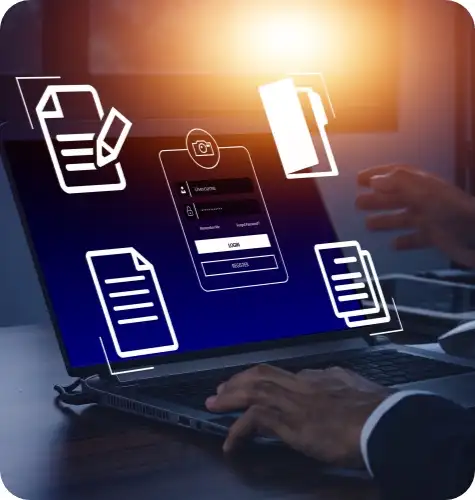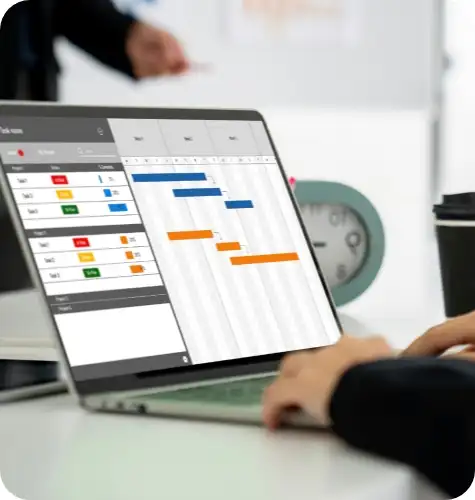AI-Powered LMS for Scalable Workforce Training
Grow your team, grow your business returns.





















Create Engaging Courses in Minutes
Vowel’s AI-powered course builder revolutionizes training content creation. Develop engaging courses in minutes with intelligent research, streamlined structure, effortless visuals, and dynamic elements including seamless YouTube content curation to maximize learner retention and enrich lesson plans.
Read MoreThe AI Advantage: Powering Performance
Intelligent Learning
Vowel LMS is your intelligent hub for boosting performance through dynamic learning experiences. From AI-enhanced eLearning to engaging virtual classrooms and just-in-time on-the-job support, our platform leverages the power of artificial intelligence to optimize every aspect of training
Book A Demo Read MoreHolistic Learning Experience
Say goodbye to learning chaos! Vowel LMS’ robust cloud platform, powered by AI, streamlines all your learning needs – eLearning, ILT and VILT. Our intelligent system choreographs every step, making it incredibly easy for admins to build, deliver, and monitor engaging learning experiences tailored for individual growth.
Book A Demo Read MoreAI in Course & Content Authoring
Vowel’s course builder empowers you to build, deliver, and track engaging course material faster and easier. Upload your existing content in various formats, embed from open sources and LTI providers, all in under 10 minutes. Simply drag, drop, paste, and launch!
Book A Demo Read MoreProduct Integrations
Google Meet
Zoom Meeting
Box.com
H5P
MS Teams

Make Learning Happen
Blend Your Learning
- Upload any content, access anywhere (BYOD)
- Launch quickly with existing training.
- Manage & report on ILT programs easily.
- Integrated blended learning in your LMS.

Create Interaction
- Consistent experience across all formats & devices.
- Connect learners with mentors for creative growth.
- Efficient learning via guided paths.

Track Individual Growth
- Comprehensive reporting and analytics from your LMS
- Proactive oversight of ILT programs.
- Automated notifications via email & chat.
- Monitor individual progress on learning journeys.

Gain Deeper Insights
- Optimize learning experiences.
- Understand what drives learning outcomes.
- Predict and improve learner performance.
- Empower learners with data-driven insights.

One Platform, Multiple Training Solutions
Effortless Multilingual learning with AI
Unlock rapid Content creation with Vowel LMS’ AI, building engaging, mobile-first courses in multiple languages. Empower your workforce with accessible knowledge, leading to quicker decision-making and faster goal attainment.

Trusted by the best in the business
Madhulika P.
Human Resources at Star India
Our experience with Vowel LMS has been awesome. It is user friendly & makes e-learning very easy. It’s simple, easy to learn & access and most importantly, support provided by the vowel LMS team is superb.
James E.
Director at Data Protection Education
Nice functionality wrapped up in a nice interface with the reports you need. I like the ability to easily build modular courses with a mixture of content – video, scorm, tincan or just a document…they’re all tracked. It’s every easy to assign user and manage reports on progress – does it out of the box and much more intuitively than some other systems I’ve used.
Radhakrishnan C.
Director at Pixel Village
Big thank you to Vowel for helping us launch Pixel Village. Very intuitive user interface, inbuilt e commerce, secure delivery of video content & Netflix like resume support were a big help. Plus the exhaustive reporting and e commerce promotion options that vowel offers was a plus to help us manage our digital marketing effectively.
Stacey F.
Owner, President Biotech Primer Inc.
Truly the best LMS I have ever implemented or manage. Our clients find the LMS easy to use as well. It’s easy to use. It’s customizable. Functions perfectly; no bugs. Superior training and support.

